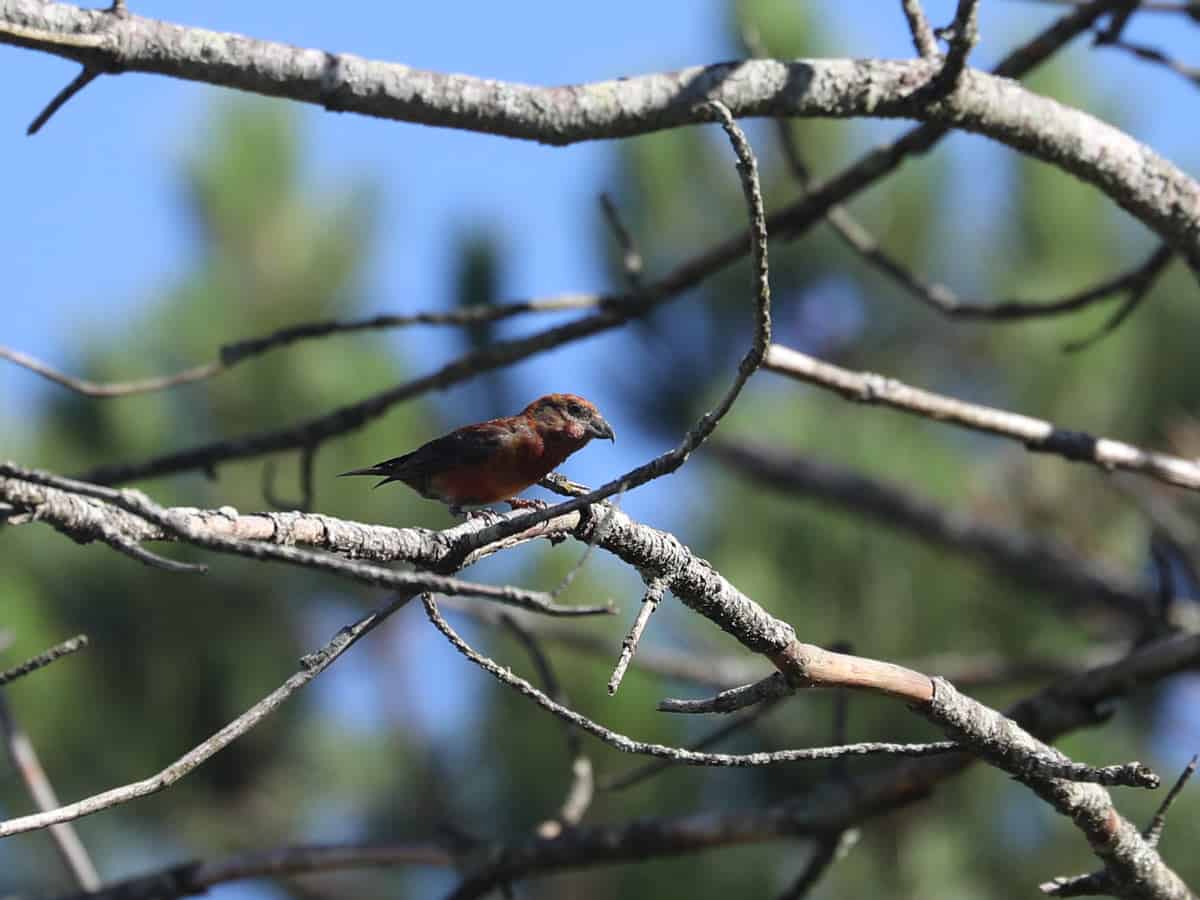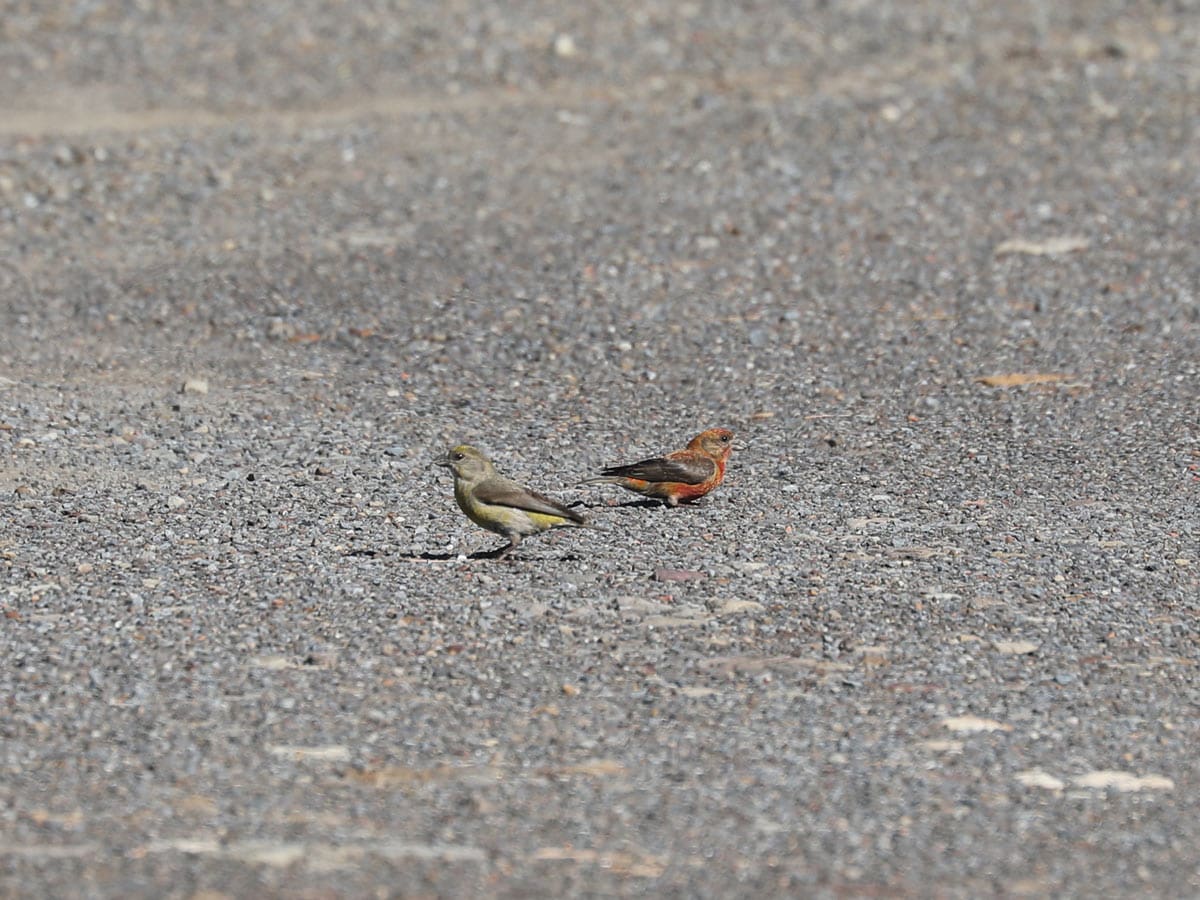Crossbills
Red Crossbills are one of Pennsylvania’s least studied breeding birds. To find nesting crossbills, you usually need to head north. Most of eastern North America’s Red Crossbills nest in Canada or in states bordering Canada. You can also find smaller nesting populations of Red Crossbills in the higher elevations of the Appalachian Mountains to our south in West Virginia, Tennessee, and North Carolina. Within Pennsylvania, they’re few and far between, with small populations in the north-central part of the state.
Crossbills, members of the finch family, are the only birds in the world in which the two parts of their bills (called mandibles) cross, with the tip of the lower mandible extending above the upper mandible. This unique feature is an adaptation that allows crossbills to specialize in prying open the scales of pine, spruce, or fir cones to access seeds. Crossbill bills are so specialized that different species and subspecies show a broad range of bill sizes, allowing them to efficiently eat the seeds from a wide variety of coniferous trees.
North America is home to four of the world’s six species of crossbills. The Red and White-winged crossbills are found primarily across northern North America and Eurasia. The Cassia Crossbill is found only in a small area in Cassia County in southern Idaho. The endangered Hispaniolan Crossbill is found only at high elevations in the Dominican Republic and Haiti, where they rely on seeds of the endangered Hispaniolan Pine as their main source of food.
Crossbills
Red Crossbills are one of Pennsylvania’s least studied breeding birds. To find nesting crossbills, you usually need to head north. Most of eastern North America’s Red Crossbills nest in Canada or in states bordering Canada. You can also find smaller nesting populations of Red Crossbills in the higher elevations of the Appalachian Mountains to our south in West Virginia, Tennessee, and North Carolina. Within Pennsylvania, they’re few and far between, with small populations in the north-central part of the state.
Crossbills, members of the finch family, are the only birds in the world in which the two parts of their bills (called mandibles) cross, with the tip of the lower mandible extending above the upper mandible. This unique feature is an adaptation that allows crossbills to specialize in prying open the scales of pine, spruce, or fir cones to access seeds. Crossbill bills are so specialized that different species and subspecies show a broad range of bill sizes, allowing them to efficiently eat the seeds from a wide variety of coniferous trees.
North America is home to four of the world’s six species of crossbills. The Red and White-winged crossbills are found primarily across northern North America and Eurasia. The Cassia Crossbill is found only in a small area in Cassia County in southern Idaho. The endangered Hispaniolan Crossbill is found only at high elevations in the Dominican Republic and Haiti, where they rely on seeds of the endangered Hispaniolan Pine as their main source of food.
About The Author
Dan Hinnebusch is the Ornithologist for Wild Birds Unlimited. Click to learn more.





